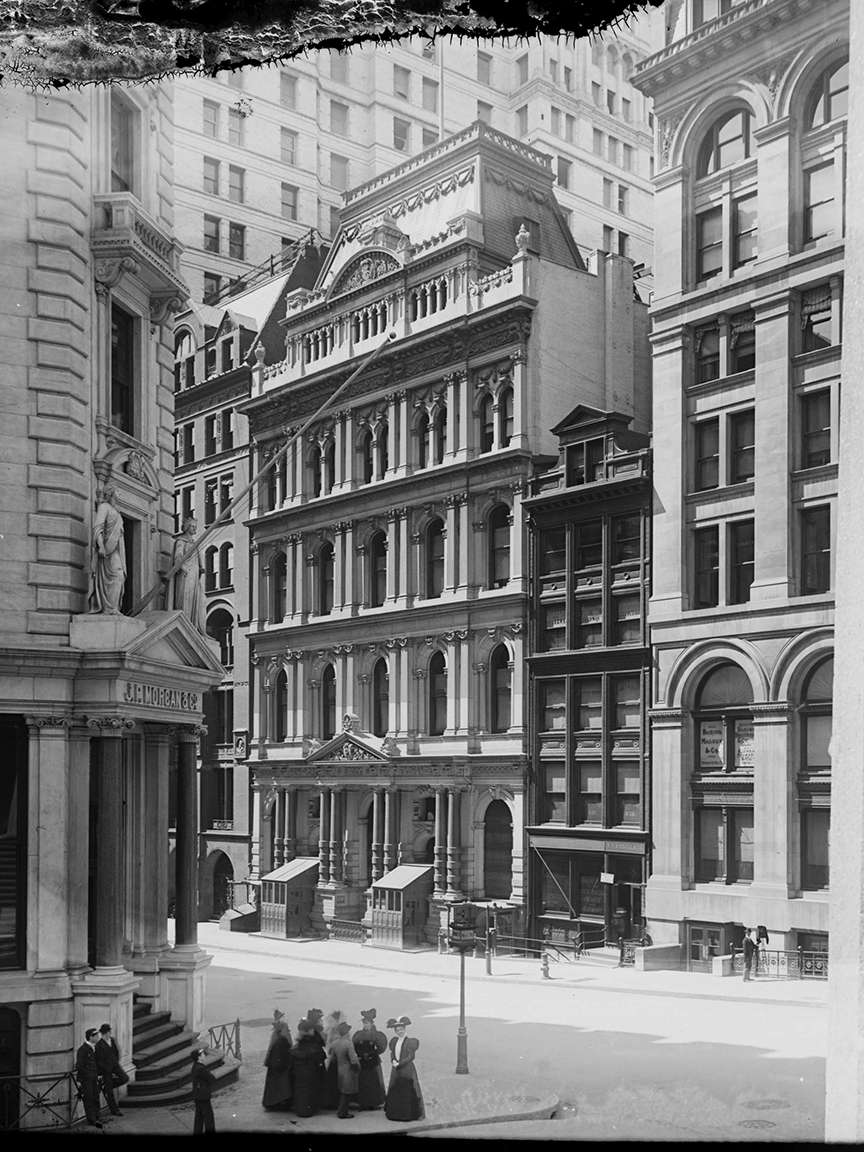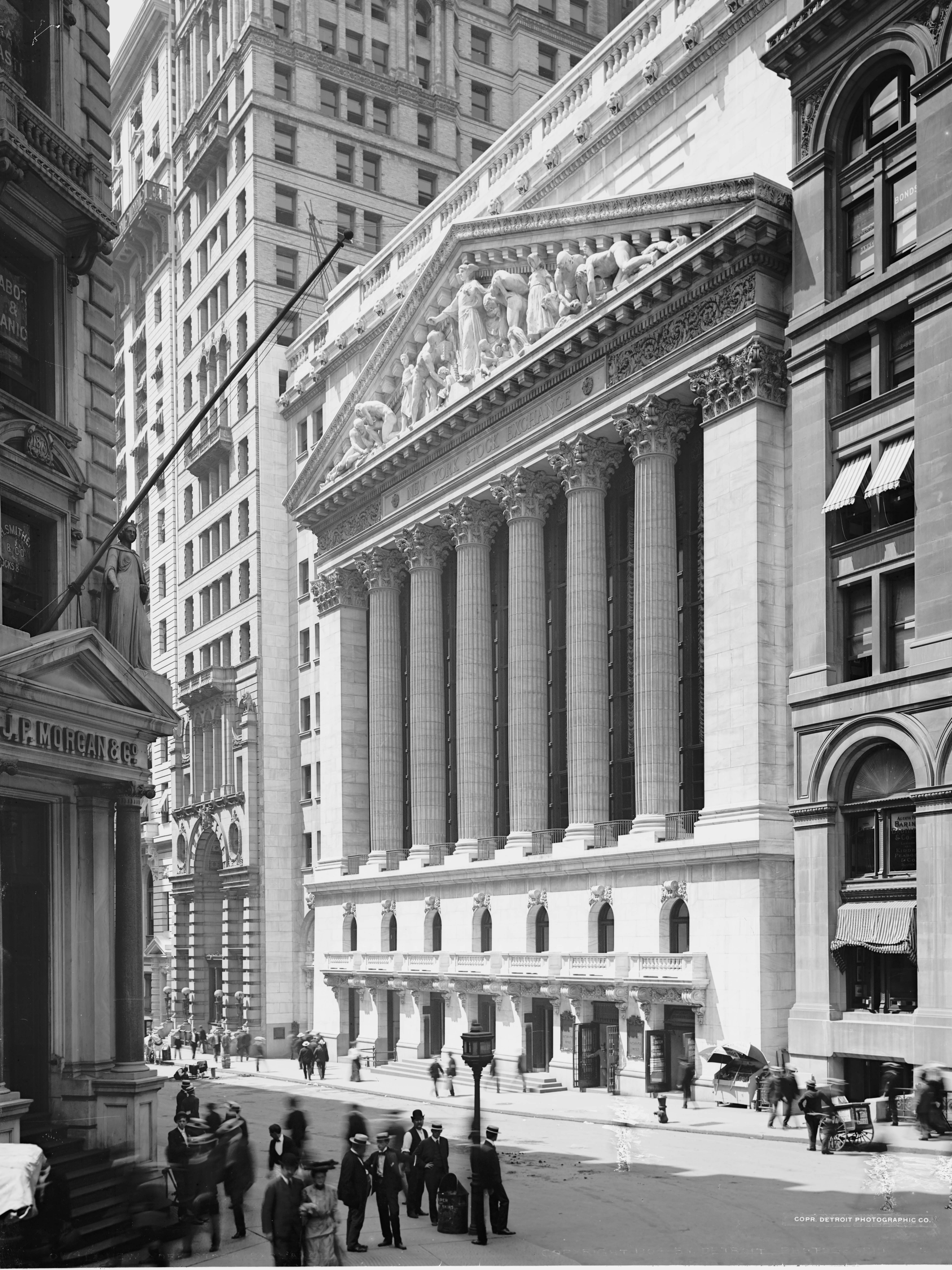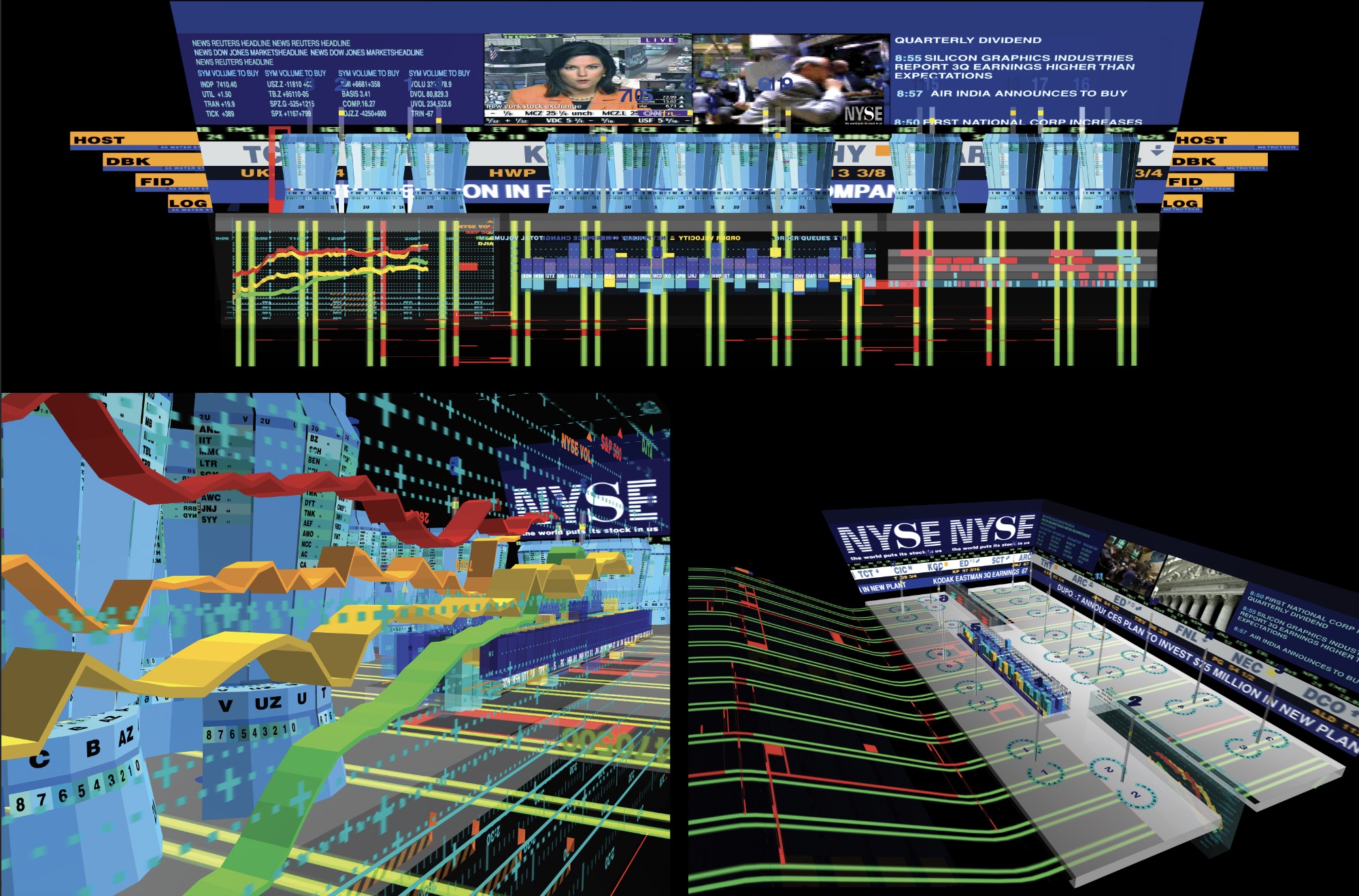The Skyscraper Museum is devoted to the study of high-rise building, past, present, and future. The Museum explores tall buildings as objects of design, products of technology, sites of construction, investments in real estate, and places of work and residence. This site will look better in a browser that supports web standards, but it is accessible to any browser or Internet device.
WALL STREET TRADING

 Left: The old Stock Exchange Building and J.P. Morgan & Co. at the corner of Wall Street and Broad Street, New York City, 1899.
Robert L. Bracklow, 1899, reproduced from the New-York Historical Society
Left: The old Stock Exchange Building and J.P. Morgan & Co. at the corner of Wall Street and Broad Street, New York City, 1899.
Robert L. Bracklow, 1899, reproduced from the New-York Historical Society
Right: New York Stock Exchange, N.Y.
Detroit Publishing Co., c. 1904, reproduced from the Library of Congress
“Wall Street” is at once a specific place, a metaphor for lower Manhattan’s entire financial district, and a term that refers broadly to the U.S. financial services industry and marketplace. At the center of this system for more than 200 years has been the New York Stock Exchange (NYSE), located at 11 Wall Street, according to the address of its narrow entrance there, but fronting far more monumentally, as a temple of trading, on Broad Street just south of the intersection of Wall Street. Through the 1980s, the “Big Board,” as the NYSE is still known, dominated the trading of stocks and securities with a 90 percent share of the market. Today only 14 percent of daily volume is traded on the NYSE.
 Three Renderings of the Virtual Trading Floor.
Studio Asymptote, 1999,
Courtesy of Asymptote Architecture: Hani Rashid + Lise Anne Couture .
Three Renderings of the Virtual Trading Floor.
Studio Asymptote, 1999,
Courtesy of Asymptote Architecture: Hani Rashid + Lise Anne Couture .
Challenges to the dominance of the NYSE in the 1990s came principally from electronic and high-frequency trading and from the rise of a global marketplace. In this environment of computers and continuous world markets, the place-based NYSE opening bell, human market makers, and traditional trading posts were archaisms.
 Photograph of the Advanced Trading Floor.
Designer: Studio Asymptote, 1999,
Used with permission of NYSE Group, Inc.
Photograph of the Advanced Trading Floor.
Designer: Studio Asymptote, 1999,
Used with permission of NYSE Group, Inc.
In 1999, the NYSE commissioned the Studio Asymptote to move them toward the 21st century by designing a model for the Advanced Trading Floor, a “state-of-the-art command center” constructed adjacent to the main space, which answered the NYSE’s need to update its facilities and accommodate the virtual-exchange model and interface. In addition, Asymptote principals Hani Rashid and Lise Anne Couture designed a Virtual Trading Floor, which they described as “a dynamic 3D view of shares and financial information, a fully interactive space containing stock exchange values, indexes, graphs, news and live video content from major television networks, which change “ floating” in real time within an architectural environment.” Their renderings are reproduced on the case opposite.
 James Sanders + Associates with Margot Wellington, 1997.
James Sanders + Associates with Margot Wellington, 1997.
